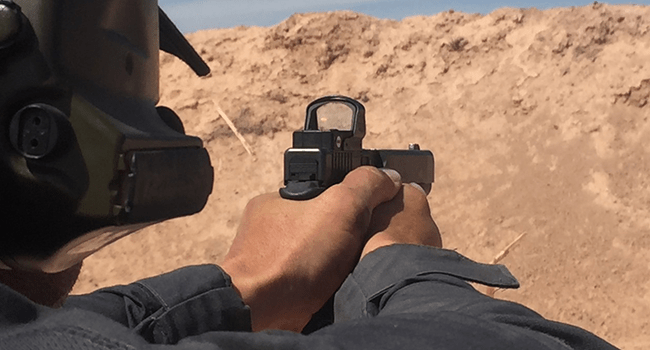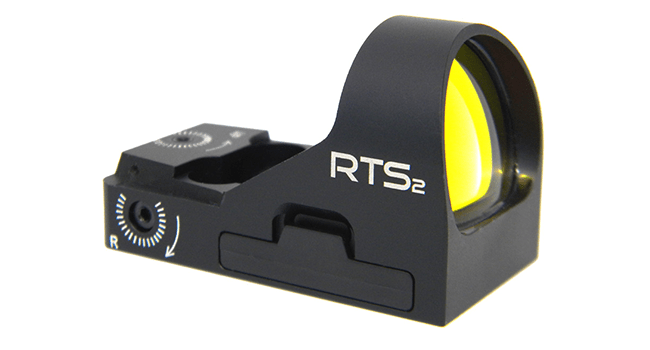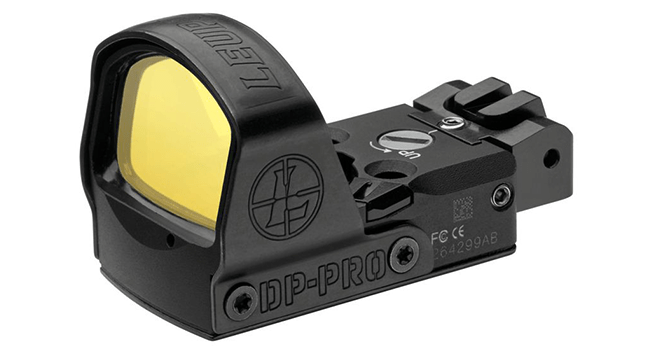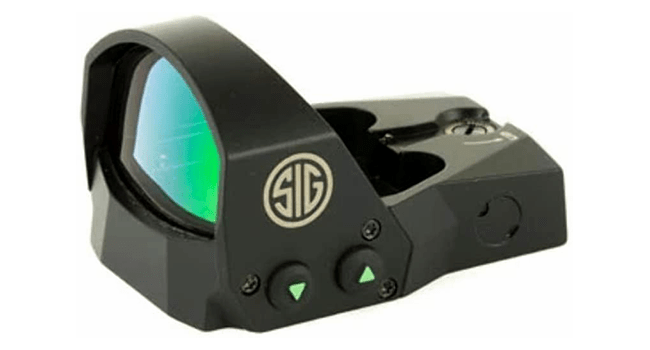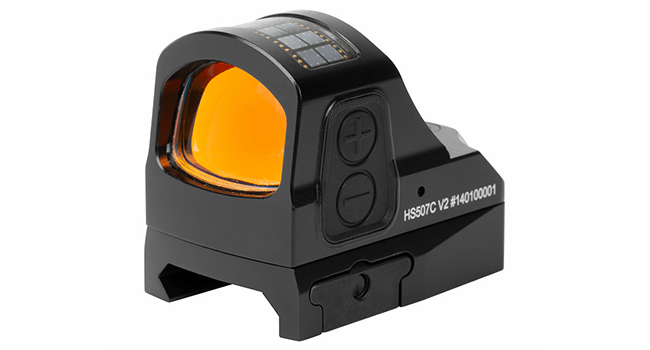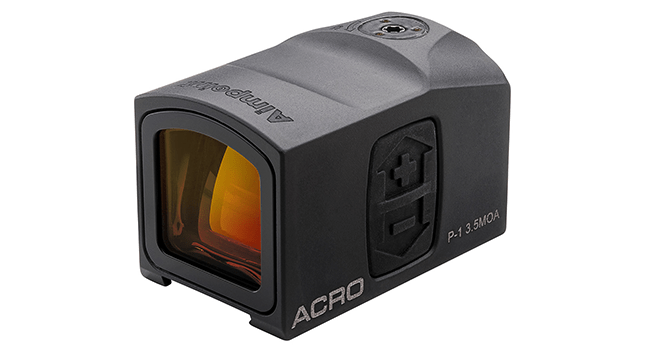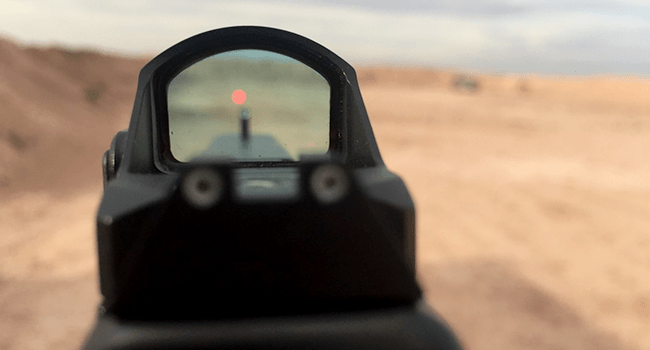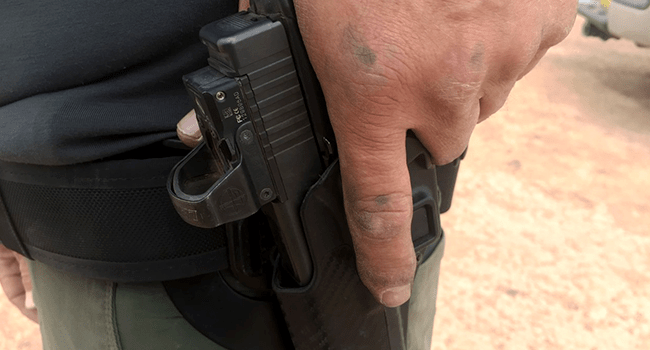Traditional vs. Electronic Pistol Sights: Is it Time to Make the Move?
By Eve Flanigan
Have you seen the occasional headline about a car thief thwarted by a stick shift car?
Some people have speculated the same will happen to the craft of shooting with iron sights. While electronic sights on handguns do not yet represent a majority, the evolution of automobile transmission types shows how what seems novel today can well become the future norm. With that kind of forward thinking, let’s examine some advantages and potential drawbacks of using these optics.
The Basics
Three varieties of red-dot sights (RDS) exist. Prism sights are most common. They gather available light to form a visible dot. Reflex sights project a reflection of a dot as an aiming point, and holographic sights display a floating image on the lens.
The other thing you need to keep in mind is that the dot is no longer just red. Green dots are also available, but to keep things simple here, we’ll use “RDS” to refer to all dot optics discussed.
The Advantages
- Rapid Target Acquisition—With practice, using an RDS reduces time required to aim. While this advantage can often be counted in fractions of a second, it is also the amount of time to claim the margin of victory in a competition or gunfight.
- Age-Friendly—People of nearly all ages enjoy shooting, but at both the younger and older ends of age in which safe handling can be practiced, a red dot can enhance the shooting experience. Using an RDS simplifies aiming for aspiring young competitors. For those with age-related vision changes—including wearing bifocals—that can result in inability to see the front sight clearly, an RDS offsets those struggles.
- Intuitive—Many beginners struggle with the concept of rear and front sight alignment. That’s a problem readily resolved with training, but, in times of unrest in which a gun might be obtained and needed in short order, an RDS offers relatively easy operation. (Just don’t skip learning safe gun storage and handling along the way!)
Potential Downsides
- Expense and Exclusivity—In their current incarnation, electronic sights are mounted with screws or adapters onto a slide milled to accommodate these optics. The sight itself, as well as the slide adaptations, add expense. Many pistol makers now offer factory-milled slide options (though not on all models), but buying an RDS-equipped pistol off the shelf is still fairly uncommon.
- Power-On Issues—Whether because of a dead battery or the sight’s design, that little red dot might not appear as quickly as desired. Some sights require manual powering on. Others are always on so long as the battery works and yet others are motion-activated. Failures can occur across all of them, therefore it’s a smart choice to pick a mounting option that retains the rear sight and keeps both iron sights visible.
- Fogging—Precipitation, humidity and cold can obscure the view through an RDS. While modern glass glazing prevents much of this, obstruction is likely if the sight is used in heavy rain or snow. For many users those are unlikely scenarios, but it’s still worth considering, as target identification is a non-negotiable safety rule.
Five Favorite Red Dots
There are several different RDS sizes and styles and some lend themselves to specific applications. Here are my top five choices.
For competition, I like the C-More RTS2B. According to the 2019 U.S. Practical Shooting Association Nationals (USPSA) equipment survey, it was the most popular optic in the Open Division. The RTS2B’s features include a motion-sensor on/off function, and its slide-out battery tray means neither removal of the sight nor re-zeroing is necessary after a battery change. It has four dot size choices and 10 brightness settings. The C-More website offers some of the best pre-purchase information on dot size. Priced at $389 by direct order from C-More.
For personal defense use, the Leupold Delta Point Pro Night Vision was designed to be a workhorse. Weather resistance, motion activation and night vision compatibility are built in. This model is the second generation of the product line, and Leupold is meeting demand for color choices with flat dark earth housings as well as black. Retail runs from $585 to $650, and you can add a rear iron sight for about $80.
Target shooters will appreciate SIG Sauer’s Romeo series, a reliable ad popular choice for many shooters today. The ROMEO1 1x30mm, specifically, is available with a variety of mounting options, including dovetail insertion on the unmodified slides of many everyday pistols, and Picatinny rail mounts to allow the user to move the red dot to a long gun. Users love its wide field of view. Available in both red-dot and reflex models, retail prices run $389 to $519.
Gear junkies who want all the options will be drawn to Holosun’s HS507C V2. It offers two different reticles besides a plain dot, along with a choice of either green or red display in a single optic. For competitors who spend long days on an outdoor range, you’ll also have no worry about battery failure with Holosun’s solar backup system. Easy battery access, 10 daylight and two night vision brightness levels and long-gun mounting options make this the most feature-rich optic on the list. Order direct for $364.99.
Anticipate shooting in austere conditions? Aimpoint’s Acro P-1 reflex sight is a standout for such times. This sight has undergone extensive testing for shock, altitude, moisture, dust and extreme temperature exposure, and it is compatible with magnifying and night vision accessories. While more effort might be necessary to mount this optic as it doesn’t fit in the footprint of other widely available systems, this sight is made for rough use. $599 by direct order.
These are just a few of the choices out there for red dot sights. Most companies are on their second or later generation of products, having made improvements based on customer feedback. It’s a great time to become a pistol red dot user. Numerous consumer reviews are available to guide decision-making.
No Surprise, Practice Makes Perfect
Perhaps surprisingly, it’s often longtime iron-sight users who take the greatest time adapting to red-dot use. Because these sights occupy the space where many shooters grab the slide for loading, unloading and malfunction clearances, their slide manipulation technique must change, slightly or dramatically, depending upon the gun, other gear and training philosophies. Also, the angle at which the gun is held for aiming is slightly different than with iron sights, and precision shots at close distances usually require compensating for sight-over-bore-line offset.
In addition to gun handling and sight picture adaptations, carrying an optic-equipped handgun requires consideration. Not every holster accommodates an electronic sight. In concealment, the added bulk may require adjustments to clothing or position of carry. Long-term exposure of these optics to body oils and sweat should generally be avoided.
With practice and experimentation, most people find the transition to a red dot opens up new levels of speed and accuracy. Any chores associated with accommodating a red dot usually seem small in comparison to those benefits.
